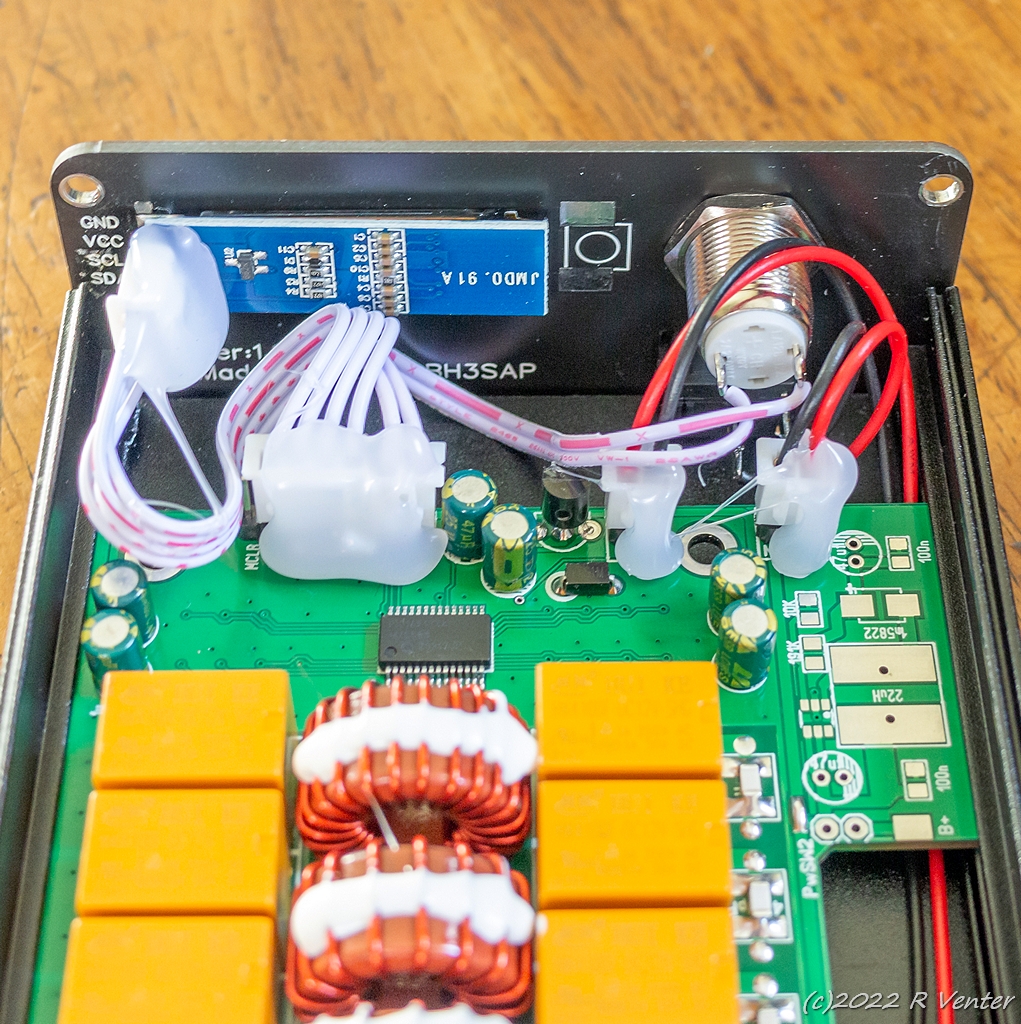

ATU-100 HF auto tuner
Here is a quick review of my ATU-100 HF after I have used it for a while.
I recently purchased an ATU-100 to replace my well love and used Z-11Pro tuner. The Z-11Pro has always worked perfectly and I still love it but for portable use the ATU-100 is just so much smaller I though I would give it a try!
The unit was ordered from a local supplier and it
arrived very quickly, thanks!
First impressions were very good, the
unit seems to be well made with a very robust case. I soon had power
connected (12V) and the antenna (G5RV) as well as the short coax cable to
the radio. For the initial tests I had the R928+ SDR transceiver
connected. With the tuner on and in "Auto" mode a carrier of 5W produced
almost instant, and very quiet, tuning on all HF bands. Initial
impressions were great!
The unit I have came with firmware version
3.2, looks like most users are happy with this versions, versions before
3.0 had a few issues.
I love the digital readout that gives you
power, SWR while tuning and then shows you the inductance (L) and
capacitance (C) needed to tune the antenna, impressive!
I opened up the tuner to look at the build quality
and components inside, again I was pleasantly surprised, everything seems
well made with really good solder joints, unlike some equipment I have
seen like MFJ where I normally end up redoing most of the solder joints.
Interesting the builder (BH3SAP) left his call sign inside as well as
a "Salute to N7DDC" the original designer of the tuner, nice touch!

Inside, looks great!

Connectors on
back panel, notice that you can also connect a long wire antenna.

Front panel
details from inside
I spent the next few days using it with a few different radios and
antennas, most of the time the tuning was quick and produced a very low
SWR.
I say "most" of the time as there seems to be an issue on some
combinations of antennas and bands. Lets take the SSB portion of 40m on
the G5RV as an example. The tuner will tune the antenna in around 2
seconds producing an SWR of around 1.7 to 1.9:1, this is even if I force a
re-tune. Interestingly when tuned like this the SWR reported by the radio
or an antenna analizer is 1.2:1.
But this is not the real problem,
If you now start transmitting the tuner will after a few seconds decide to
re-tune, taking 2-3 seconds with SWR readings of up to infinity before
settling on the same L&C combo and the same SWR. After a few seconds it
will repeat again. While this is happening the TX will, while it sees the
high SWR, cut back power a lot. The result is that your signal is up and
down on the RX side all the time, not good....
I have tried other
bands and modes as well. If the SWR is above about 1.6:1 it will go into
this retune loop. There is a solution, do not use "Auto" mode or switch
Auto mode off after the tune. It seems to work but I will do more testing
on this.
I think the problem is with the SWR reading done by the tuner, it is
higher than the real tuner making the tuner try to retune. I have also
noticed if you run more power while transmitting than your original output
while tuning the indicated SWR will either jump around or suddenly be a
lot higher resulting in a re-tune attempt.
As a check I tried the
same radio, antenna and frequency combinations with the Z-11Pro tuner and
it never had an issue, it will tune once and that was that,
I have
done some research on the web and it seems like there are issues with some
of the tuners resulting in incorrect SWR and power readings. The problem
seems to be a combination of incorrect diodes used and sometimes the core
material used for some of the inductors. The issues seem to be only with
the tuners coming out of China, not the originals from N7DDC.
Unfortunately this problem makes the ATU-100 tuner less attractive, or
at least the Chinese versions. I will do some more tests but at the moment
I do not trust the tuners so it looks like the Z-11Pro will see some more
service!
If you want to buy an ATU-100 just make sure it was not
built in China and you would more than likely love it!
(c)R Venter 1996-2023